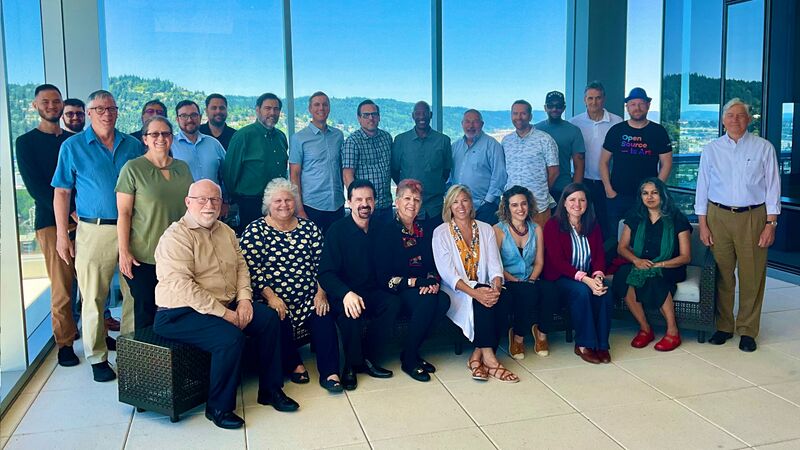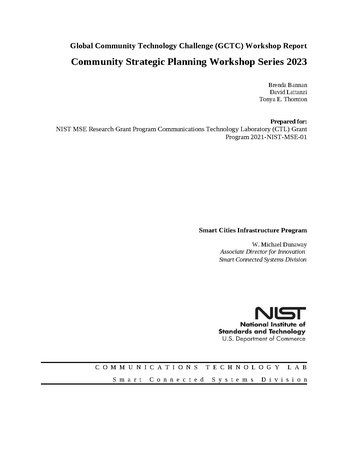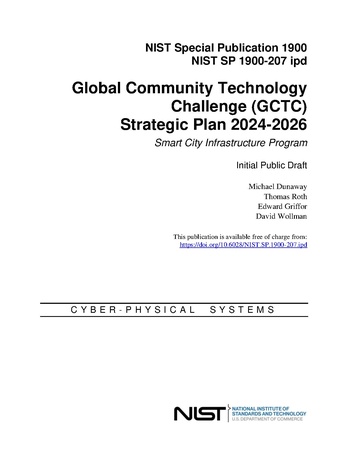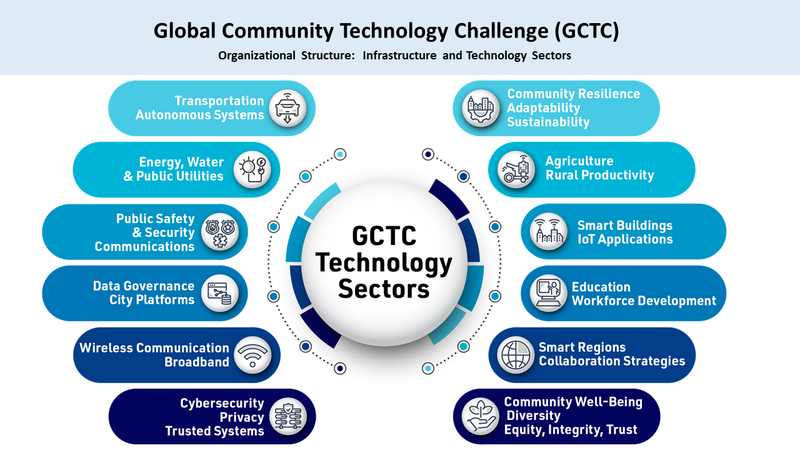Front Page: Difference between revisions
No edit summary |
No edit summary |
||
| Line 16: | Line 16: | ||
<div id="audiences" class="mainpage_row"> | <div id="audiences" class="mainpage_row"> | ||
<div class="mainpage_box"> | <div class="mainpage_box"> | ||
The GCTC program has recently published its first Strategic Plan (2024-2026), which describes a 3-year program of research and development and reaffirms a continuing collaboration between the federal smart cities program led by NIST and communities, cities, and regions across the country. Developed in collaboration with 28 community leaders of the GCTC program, the Strategic Plan has three key goals: | |||
*Establish a research-based, scientific foundation for the NIST Smart Cities Infrastructure program, the GCTC, and the broader smart cities community. | |||
*Broaden the scope and agenda for smart cities to address current challenges and achieve the equitable distribution of outcomes for community residents, businesses, and organizations. | |||
*Enhance the national public-private partnership of smart city programs, research institutions, private sector enterprises, and the next generation of community leaders, scientists, and researchers. | |||
The GCTC is organized into twelve Technology Sectors, illustrated below, corresponding with city infrastructure, services, and programs that can benefit from the integration of advanced technologies to enable digital transformation and improve overall quality of life for community residents. | |||
[[File:NIST.SP.1900-207.ipd.pdf|x450px]] | [[File:NIST.SP.1900-207.ipd.pdf|x450px]] | ||
[[File:GCTC Org Structure.png|x450px|link=https://www.nist.gov/ctl/smart-connected-systems-division/iot-devices-and-infrastructures-group/smart-americaglobal-0]] | [[File:GCTC Org Structure.png|x450px|link=https://www.nist.gov/ctl/smart-connected-systems-division/iot-devices-and-infrastructures-group/smart-americaglobal-0]] | ||
NIST is seeking public comment on the new strategy and will review all stakeholder comments, with a final version of this document published this Spring after addressing the received feedback. | |||
The GCTC Strategic Plan is available as a free download from NIST and available for public comment until 29 February 2024. Your input is requested! Instructions for submitting comments appear on page (i) of the document, which may be accessed [https://doi.org/10.6028/NIST.SP.1900-207.ipd here]. | |||
</div> | </div> | ||
</div> | </div> | ||
Revision as of 06:48, January 26, 2024
The Global Community Technology Challenge (GCTC) is a U.S. smart cities and communities program led by the National Institute of Standards and Technology (NIST). The GCTC was formed in 2014 as a partnership of cities and communities, local and state government agencies, business enterprises, non-governmental organizations, universities, and research institutes dedicated to improving the urban environment through the integration of digital technologies.
The GCTC program has recently published its first Strategic Plan (2024-2026), which describes a 3-year program of research and development and reaffirms a continuing collaboration between the federal smart cities program led by NIST and communities, cities, and regions across the country. Developed in collaboration with 28 community leaders of the GCTC program, the Strategic Plan has three key goals:
- Establish a research-based, scientific foundation for the NIST Smart Cities Infrastructure program, the GCTC, and the broader smart cities community.
- Broaden the scope and agenda for smart cities to address current challenges and achieve the equitable distribution of outcomes for community residents, businesses, and organizations.
- Enhance the national public-private partnership of smart city programs, research institutions, private sector enterprises, and the next generation of community leaders, scientists, and researchers.
The GCTC is organized into twelve Technology Sectors, illustrated below, corresponding with city infrastructure, services, and programs that can benefit from the integration of advanced technologies to enable digital transformation and improve overall quality of life for community residents.
NIST is seeking public comment on the new strategy and will review all stakeholder comments, with a final version of this document published this Spring after addressing the received feedback. The GCTC Strategic Plan is available as a free download from NIST and available for public comment until 29 February 2024. Your input is requested! Instructions for submitting comments appear on page (i) of the document, which may be accessed here.
Premium Sponsors
 |
 |
 |
 |
Sponsors
 |
 |
 |
 |
 |
 |
 |
 |
 |
 |
 |
 |













